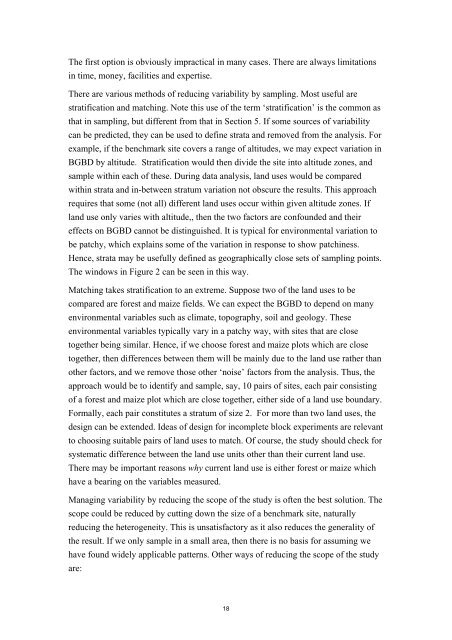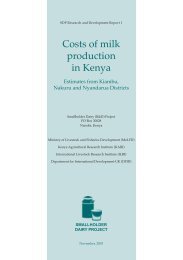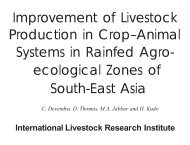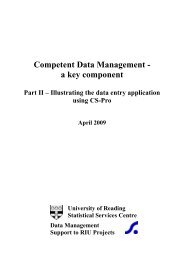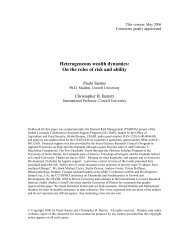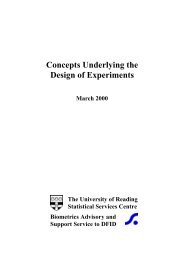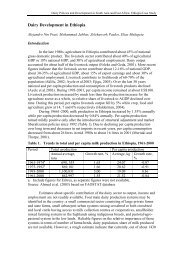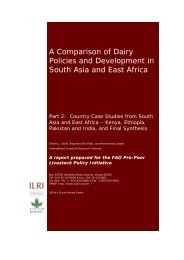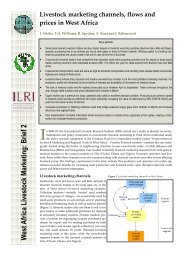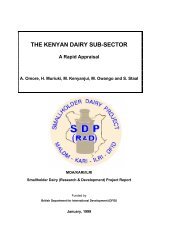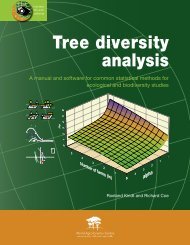Designing ecological and biodiversity sampling strategies
Designing ecological and biodiversity sampling strategies
Designing ecological and biodiversity sampling strategies
You also want an ePaper? Increase the reach of your titles
YUMPU automatically turns print PDFs into web optimized ePapers that Google loves.
The first option is obviously impractical in many cases. There are always limitationsin time, money, facilities <strong>and</strong> expertise.There are various methods of reducing variability by <strong>sampling</strong>. Most useful arestratification <strong>and</strong> matching. Note this use of the term ‘stratification’ is the common asthat in <strong>sampling</strong>, but different from that in Section 5. If some sources of variabilitycan be predicted, they can be used to define strata <strong>and</strong> removed from the analysis. Forexample, if the benchmark site covers a range of altitudes, we may expect variation inBGBD by altitude. Stratification would then divide the site into altitude zones, <strong>and</strong>sample within each of these. During data analysis, l<strong>and</strong> uses would be comparedwithin strata <strong>and</strong> in-between stratum variation not obscure the results. This approachrequires that some (not all) different l<strong>and</strong> uses occur within given altitude zones. Ifl<strong>and</strong> use only varies with altitude,, then the two factors are confounded <strong>and</strong> theireffects on BGBD cannot be distinguished. It is typical for environmental variation tobe patchy, which explains some of the variation in response to show patchiness.Hence, strata may be usefully defined as geographically close sets of <strong>sampling</strong> points.The windows in Figure 2 can be seen in this way.Matching takes stratification to an extreme. Suppose two of the l<strong>and</strong> uses to becompared are forest <strong>and</strong> maize fields. We can expect the BGBD to depend on manyenvironmental variables such as climate, topography, soil <strong>and</strong> geology. Theseenvironmental variables typically vary in a patchy way, with sites that are closetogether being similar. Hence, if we choose forest <strong>and</strong> maize plots which are closetogether, then differences between them will be mainly due to the l<strong>and</strong> use rather thanother factors, <strong>and</strong> we remove those other ‘noise’ factors from the analysis. Thus, theapproach would be to identify <strong>and</strong> sample, say, 10 pairs of sites, each pair consistingof a forest <strong>and</strong> maize plot which are close together, either side of a l<strong>and</strong> use boundary.Formally, each pair constitutes a stratum of size 2. For more than two l<strong>and</strong> uses, thedesign can be extended. Ideas of design for incomplete block experiments are relevantto choosing suitable pairs of l<strong>and</strong> uses to match. Of course, the study should check forsystematic difference between the l<strong>and</strong> use units other than their current l<strong>and</strong> use.There may be important reasons why current l<strong>and</strong> use is either forest or maize whichhave a bearing on the variables measured.Managing variability by reducing the scope of the study is often the best solution. Thescope could be reduced by cutting down the size of a benchmark site, naturallyreducing the heterogeneity. This is unsatisfactory as it also reduces the generality ofthe result. If we only sample in a small area, then there is no basis for assuming wehave found widely applicable patterns. Other ways of reducing the scope of the studyare:18


